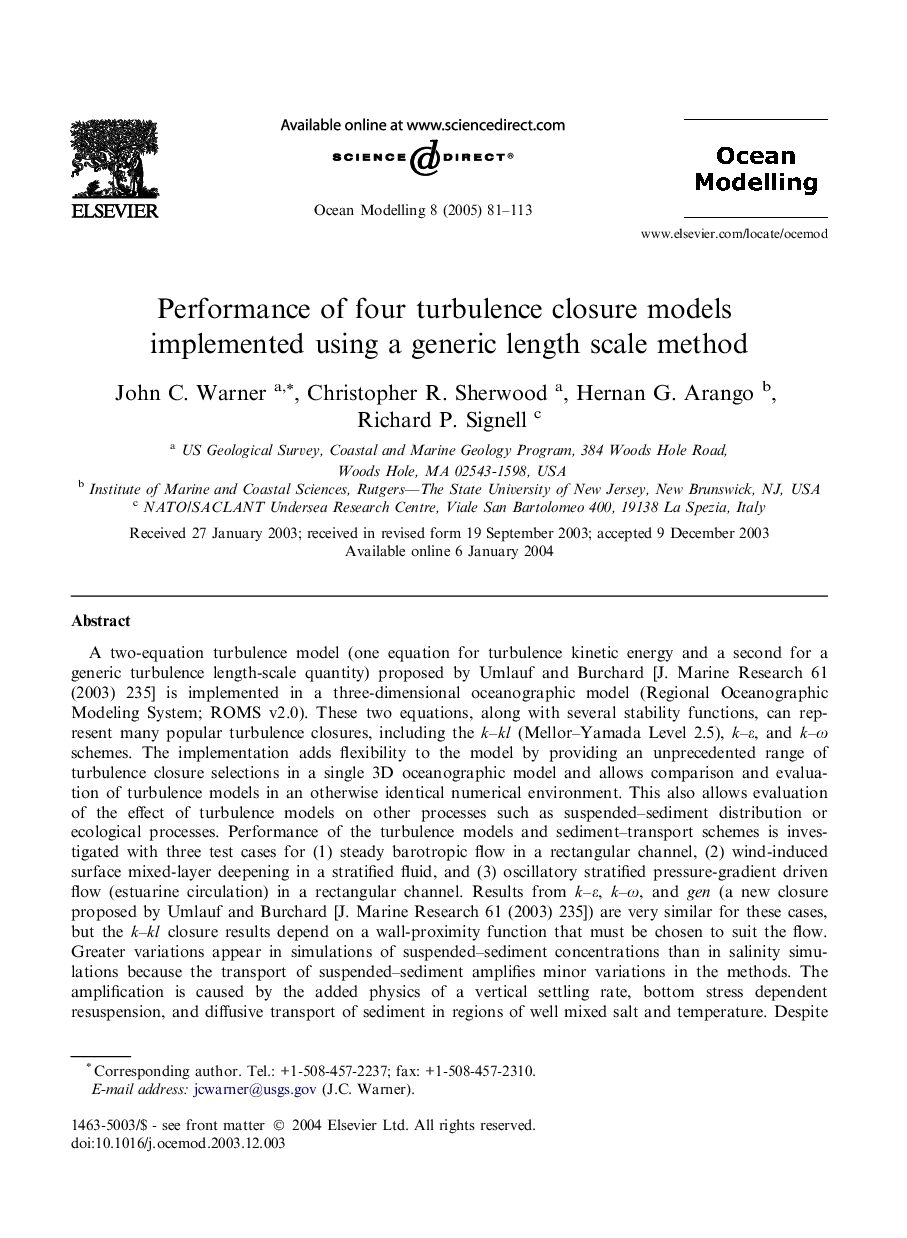| Article ID | Journal | Published Year | Pages | File Type |
|---|---|---|---|---|
| 9484856 | Ocean Modelling | 2005 | 33 Pages |
Abstract
A two-equation turbulence model (one equation for turbulence kinetic energy and a second for a generic turbulence length-scale quantity) proposed by Umlauf and Burchard [J. Marine Research 61 (2003) 235] is implemented in a three-dimensional oceanographic model (Regional Oceanographic Modeling System; ROMS v2.0). These two equations, along with several stability functions, can represent many popular turbulence closures, including the k-kl (Mellor-Yamada Level 2.5), k-ε, and k-Ï schemes. The implementation adds flexibility to the model by providing an unprecedented range of turbulence closure selections in a single 3D oceanographic model and allows comparison and evaluation of turbulence models in an otherwise identical numerical environment. This also allows evaluation of the effect of turbulence models on other processes such as suspended-sediment distribution or ecological processes. Performance of the turbulence models and sediment-transport schemes is investigated with three test cases for (1) steady barotropic flow in a rectangular channel, (2) wind-induced surface mixed-layer deepening in a stratified fluid, and (3) oscillatory stratified pressure-gradient driven flow (estuarine circulation) in a rectangular channel. Results from k-ε, k-Ï, and gen (a new closure proposed by Umlauf and Burchard [J. Marine Research 61 (2003) 235]) are very similar for these cases, but the k-kl closure results depend on a wall-proximity function that must be chosen to suit the flow. Greater variations appear in simulations of suspended-sediment concentrations than in salinity simulations because the transport of suspended-sediment amplifies minor variations in the methods. The amplification is caused by the added physics of a vertical settling rate, bottom stress dependent resuspension, and diffusive transport of sediment in regions of well mixed salt and temperature. Despite the amplified sensitivity of sediment to turbulence models in the estuary test case, the four closures investigated here all generated estuarine turbidity maxima that were similar in their shape, location, and concentrations.
Related Topics
Physical Sciences and Engineering
Earth and Planetary Sciences
Atmospheric Science
Authors
John C. Warner, Christopher R. Sherwood, Hernan G. Arango, Richard P. Signell,
